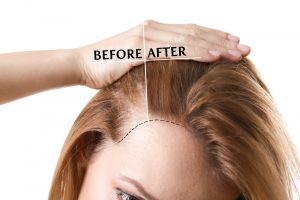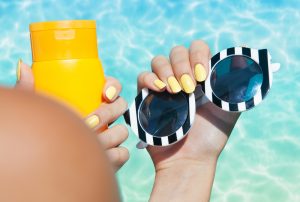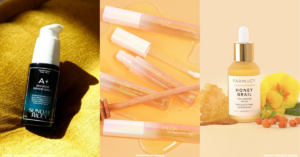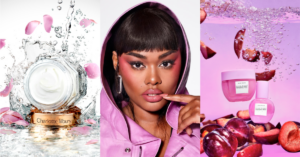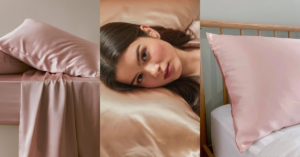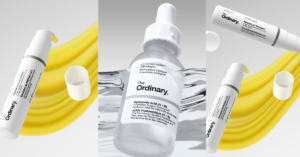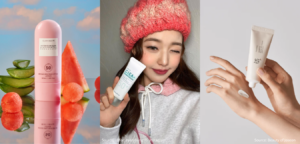Skincare
3 Skin Hazards That Cause Premature Ageing, Even When You’re Indoors
What do you think is damaging your skin? When your skin starts to feel dry or rough, do you automatically...
By: Dedet Panabi / June 6, 2019

What do you think is damaging your skin? When your skin starts to feel dry or rough, do you automatically think that you just reacted to a product? Do you think you just get pimples because you’re not cleansing enough, or “it’s just that time of the month”?
While dirt and hormones can certainly affect your skin, there are a lot of environmental aggressors that can affect your skin health. They can:
- weaken your moisture barrier
- affect your skin balance
- damage skin cells and collagen
- worsen existing skin conditions
- increase your risk for skin cancer
- causer 90% of premature skin ageing – so your skin looks and feels older than you really are!
Find out what’s really hurting your skin, so you can prevent and reverse the damage with smarter skincare and protection.

Contents
Ultraviolet rays
The sun emits three kinds of rays: UVA, UVB and UVC. The ozone layer blocks most of UVC, but we’re exposed to UVA and UVB.
- UVA Rays. UVA are long-wave rays and can penetrate deep into our skin layers. It makes up 90% of UV radiation, and can break down the DNA, protein and lipids – including collagen — in your skin. That’s why UVA exposure can lead to wrinkles, hyperpigmentation and other signs of skin ageing. Since UVA can penetrate clouds and windows, you’re exposed to it even on cloudy days or when you’re indoors.
- UVB Rays. UVB are short waves that affect our skin surface. They cause sunburn and tanning — without sunscreen or any protective shield, UVB rays can start burning your skin in as little as 15 minutes. Even worse, it creates considerable damage to the skin DNA cells. If it affects the DNA that controls cell growth, you may develop skin cancer.
Unfortunately, we have higher risk for sun damage than ever before. The ozone layer – our first defense against UV exposure — is depleting. We need more powerful skincare and sun protection to prevent premature ageing and skin cancer.

Blue light
UV rays are invisible light, but there is the visible light spectrum that causes the colors that we see around us. That includes blue light (and is the real answer to the famous question of, ‘why is the sky blue?’).
Blue light has the shortest wave length but also emits the highest energy. In fact, it’s also called HEV, or high energy visible light. While the sun is our biggest source of blue light, it’s also emitted by cell phones, laptops, computers, and both fluorescent and LED bulbs.
That’s why blue light has now become a health concern. Blue light has some benefits (it helps regulate our circadian rhythms or natural body clock, and can even boost our mood and mental alertness). However, too much can hurt our bodies and our skin too. It can cause eye strain and even permanent eye damage. It can disrupt sleep cycles. It’s even been linked to depression and diabetes!
Aside from that, blue light can damage your skin. Like UVA, it can penetrate the skin, damaging DNA and breaking down collagen and elastin. It also stimulates free radicals, and can trigger skin conditions and pigmentation.
In the digital age we are exposed to blue light for longer periods and closer proximity. (How often do you lean forward to your laptop or hold your phone to your ear?). Right now, as you’re reading this article in your room, you’re getting blue light from your gadget and the indoor lights – even if it’s late at night!

Pollution
The air we breathe is full of scary-sounding chemical compounds: polycyclic aromatic hydrocarbons (PAHs), volatile organic compounds (VOCs), nitrogen oxides (NOx), particulate matter (PM). They’re emitted by cars, factories, or even household cleansers, air fresheners, dry cleaning and air conditioners.
These chemicals can cause skin allergies and eczema, and damage our skin’s natural shield: the moisture barrier.
When your moisture barrier is weak, your skin can become dry and more prone to wrinkles and pigmentation. It’s also easier for smaller particles to penetrate the deeper layers and cause free radical damage. It’s a vicious cycle: the more you go out, the more exposure you get – and the more vulnerable you are to its effects.
People who live in the cities are at higher risk. Scientists who measured the skin hydration, barrier function, texture and collagen levels of urban women found that they showed 10% more signs of early ageing and 10% weaker barrier functions.
Even those who live in suburban areas can still be exposed to pollution, since the air can carry chemical compounds for miles.
What can you do to protect your skin?
You can’t completely avoid UV rays, blue light and pollution. They’re part of daily life and your work – for most of us, living in a cave simply is not an option. However, you can protect yourself and minimize the damage they do to your skin and your health.
- Get the best possible sun protection you can find. It should shield you from as many aggressors as possible: UVA, UVB, blue light and pollution. Be sure to apply the right amount, avoid the sun from 10am to 4pm when the UV rays are strongest, and take additional precautions (like wearing a hat or sunglasses) when outdoors.
Counter the effects of skin damage with proper skincare. Cleanse thoroughly, and use creams that neutralize hyperpigmentation and heal your skin moisture barrier. You can also add a beauty supplement to your routine can also strengthen your skin from within.
You can protect your skin from environmental aggressors! Stay informed, choose the right skincare products, commit to a consistent and effective skincare routine, and take proper precautions.
Get complete protection!
Crystal Tomato has just launched Beyond Sun Protection, the most complete sunscreen in the market today! It shields you from UVA, UVB, Blue Light, pollution and infrared. Find out more on the Crystal Tomato website.


